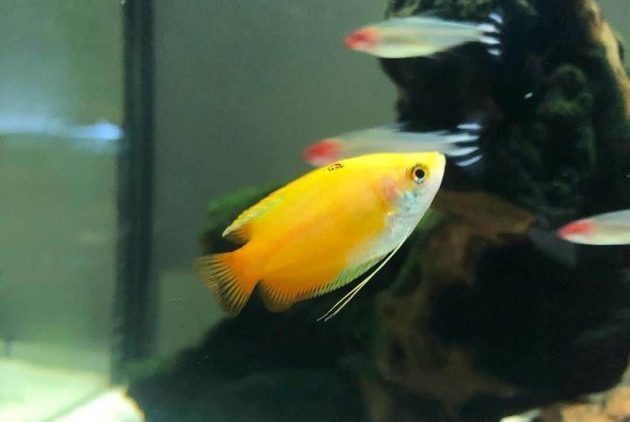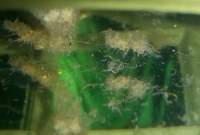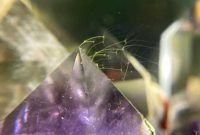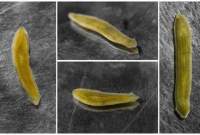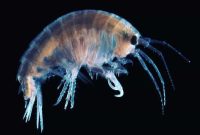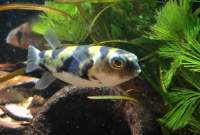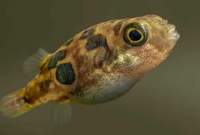Complete Honey Gourami Care Guide – Trichogaster Chuna, more popularly known as “Honey Gourami,” is one of the gourami fish species. These fish are previously known as Colisa sota or Colisa chunna.
They originate from Bangladesh and India. These small tropical fish commonly founds in lakes and rivers with thick vegetation. They tend to prefer to inhabit the top and middle levels of water.
Another selective breed of them is sunset honey gourami, red honey gourami, and the red flame of honey gourami.
Complete Honey Gourami Care Guide – Keeping, Tank Setup, Appearance, Feeding, Breeding
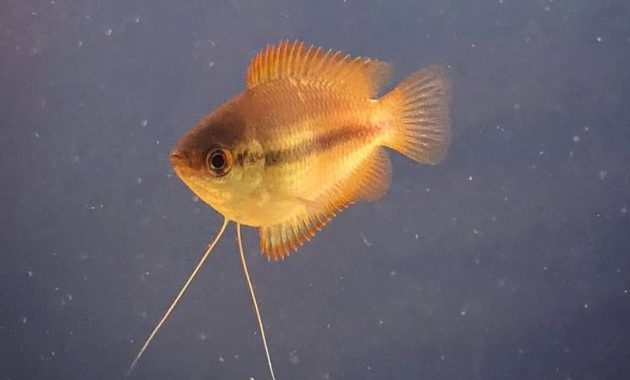
Appearance, Behaviour, And Lifespan
The male and female honey gourami will show a silvery grey to light yellow coloration in the beginning. They also have horizontal stripes with light brown color in the middle of the body extending from the behind of the eye to the caudal peduncle.
The female will stay this color for a lifetime. While the male honey gourami will develop, their color becomes bright honey-yellow or reddish-orange coloration. Besides, the ventral side of males (belly, throat, and face) will become black or dark blue.
The honey gourami can grow up to 3 inches and lifespan between 4-8 years. They also typically peaceful fish, which means they can live together with other fish species in the same tank.

Buy The Yellow Honey Gourami Fish Only On eBay
They belong to the labyrinth fish, so you will see them rise to the water surface to take a breathe frequently.
Remember, the honey gourami may be closely related to “dwarf gourami,” but they are not under the same species. The dwarf gouramis usually have blue and red colors. The honey gourami has eyes closer to their mouth than dwarf gourami.
These yellow honey gourami also often be mistaken with “sunset thicklip gourami.” It is typically larger (grow to 4 inches), and its body coloration is more orange than the honey gourami species.
Read Also: The Complete Guide To Keep Dwarf Gourami Fish
Keeping And Tank Setup
You can keep these fish in single, pair, or in a community tank. You can keep the honey gourami in a 5-gallon tank for a single but recommended to use a 10-gallon tank, a pair, and a community of them use a 20-gallon aquarium or larger.
Recommended using dark substrates. It will help the honey gourami show the best colors in the tank. Add some tall aquarium plants, driftwood, or rock to decorate the tank. These shy fish will be happy and feel secure if you plenty of hiding places in the aquarium.
Read Also: 10 Good Reason Why You Should Have An Aquarium Fish At Your Home
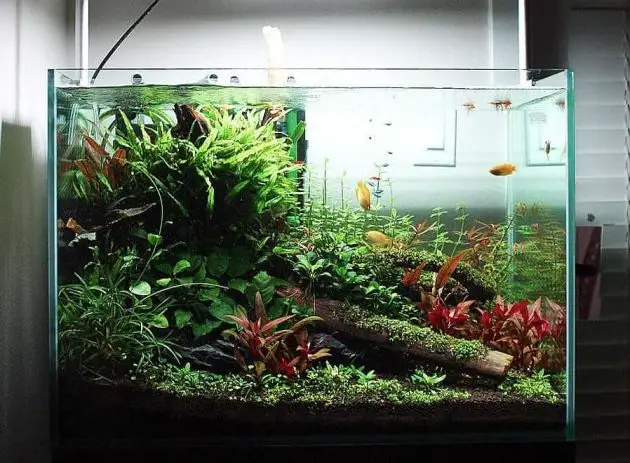
They also tend to prefer dense floating vegetations so that you can add Salvinia natans or Azolla cristata to the water surface. But, they will take a breath on the water surface regularly, so it’s important to you have some area without covered by floating plants.
Use lighting at a moderate level, and water temperature should be between 22-28 °C (71-82 °F). PH water should be between 6.0 – 7.5, and water hardness should be between 36 – 268 ppm.
Use a soft filtration system and add some air stone to offer the honey gourami the easiest oxygen supply. Recommended changing water 25% per week to keep these small tropical fish happy and healthy.
Read Also: Are Axolotls Good Pets For You? It’s A Complete Guide Of Keeping, Feeding, Behavior, Characteristics
Feeding
The honey gourami are omnivore. In the wild, they usually eat small insects and small invertebrates. In the captive, they may be to be fed with fish pellets or flakes. However, Adding some live food such as bloodworms or brine shrimp will give more benefits to them. It will enhance their coloration and healthy.
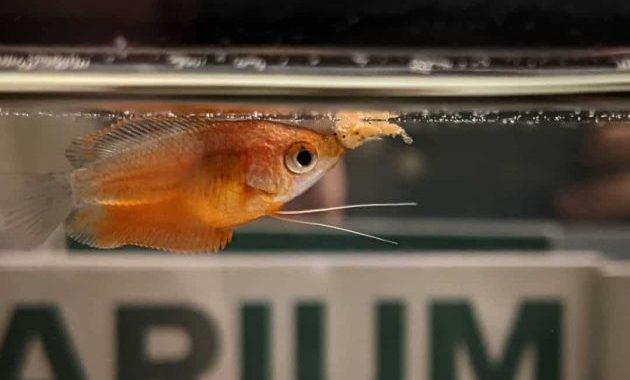
Tank Mates
They are very peaceful fish, but they are slow-moving and timid. So you could add some tank mates with have characteristics like them. Some aquarium fish like tetra, corydoras, siamese algae eater, molly, platy, guppy, and kuhli loach is suitable for them.
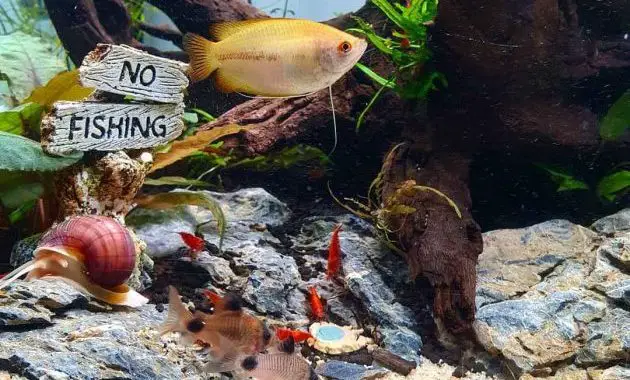
Some aquarium snail and shrimps are also can be kept together with these fish. Don’t use aggressive fish like betta fish or and larger cichlid fish for their tank mates. It will be intimidated and bully the honey gourami make them stressed and unhappy.
Read Also: Dwarf Gourami Fish Tank Mates
Breeding
Breeding these freshwater small aquarium fish is easy if you provide the right conditions. Same as dwarf gourami, they belong to bubble nester builder. They will use the aquatic plants to bind the nests, so the aquarium plants are crucial.
Recommended using 10 – 20 gallon tank for breeding. Reduce the water level to 6-8 inches in height. The water temperature should be around 28 °C (82°F) with pH water of around 7. You can use an aquarium thermostat to easier monitoring the water temperature.
After the male builds a bubble nest, he will display his courting color to grab female attention. After the female approaches the male, it signals the start of the spawning process. At this point, the male honey gourami will wrap the female, and then the female will lay the eggs and fertilized them at the same time by the male.
Read Also: “Azolla Cristata” Is The Best Live Floating Plants For Betta Fish Tank
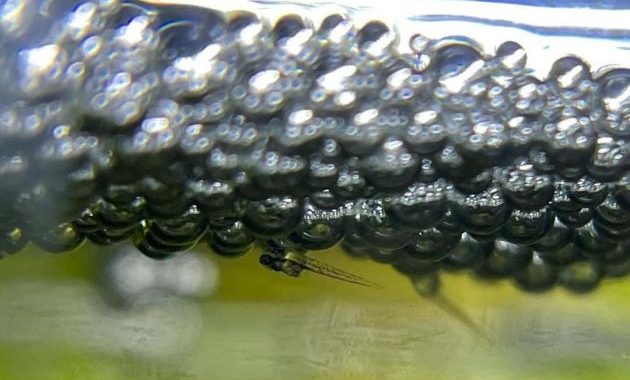
The male will collect them and put the eggs into the bubble nest. Once the spawning session is complete, the male will guard the eggs until they hatched. At the same time, the female can be removed from the aquarium breeding.
The eggs will hatch between two days, depending on the water temperature. At this stage, the male should be removed. Usually, the fry needs 3 days to free-swimming and leave its nest. The fry can be fed by infusoria until they grow enough to eat larger food like brine shrimp.
[embedyt] https://www.youtube.com/watch?v=3WXTuPt2UHw[/embedyt]

